Given the robust nature of learning sciences research, this website is best viewed on tablets and computers. A small screen experience is coming in the future.
On June 22, 2021, we will launch updated strategies for the Math PK-2 model, as well as additional updates to the Navigator that highlight equity, SEL, and culturally responsive teaching. To learn more, visit our Site Updates (available in the "About" menu at the top of any page).
“When we understand learner variability, we see a design challenge, not a student problem.” (Pape 2018)
Learner variability is the recognition that each student has a unique set of strengths and challenges across a whole child framework that are interconnected and vary according to context. It embraces both students’ struggles and strengths. In concept and practice, learner variability opens up the doors to cultural responsive and strengths-based, inclusive teaching and learning for each student.
LVP’s web app, the Learner Variability Navigator (LVN), is a free and open source tool with professional learning resources that can be customized for educators and edtech developers. The goal of LVN is to provide easy access to evidence-based strategies that they can readily weave into their practice and products in order to meet the needs of the full diversity of learners. LVN is composed of learner models from grades pre-K through 12 in literacy and math, as well as an adult learner model—all based on a whole learner framework. Each learner model was developed by a team of researchers and practitioners (see below).
Most unique about LVN is the tool’s ability to show connections among factors (for example, how sleep can have an impact on working memory) and provide strategies that can address the connected factors. Understanding the different factor connections displayed in LVN helps educators and edtech developers understand the “why” of each student, customize learning, and, thus, put students and their unique strengths and struggles at the center of the learning experience.
Learner variability is based on Todd Rose’s book, The End of Average. One continuing goal of LVP is to disrupt the myth of the average learner and provide educators and edtech developers with evidence-based factors and strategies that can easily be incorporated into their practice and product. The Oak Foundation is the primary funder of the project. Other funders include: CZI, The Bill and Melinda Gates Foundation, and Overdeck Family Foundation.
Learner variability is not learning styles (e.g., identifying as an auditory, visual, or kinesthetic learner). The notion of learning styles, while widespread, is not grounded in research and further promotes the idea that students have a fixed way of learning. Importantly, the modality a learner uses or prefers can vary greatly depending on the task and context. For instance, you might remember a phone number by repeating it multiple times (auditory), but you might remember someone’s name with a visual reminder, such as a nameplate on a desk. Additionally, research shows that engaging students with multi-modal instruction (audio, visual, and kinesthetic) helps solidify information into Long-term Memory.
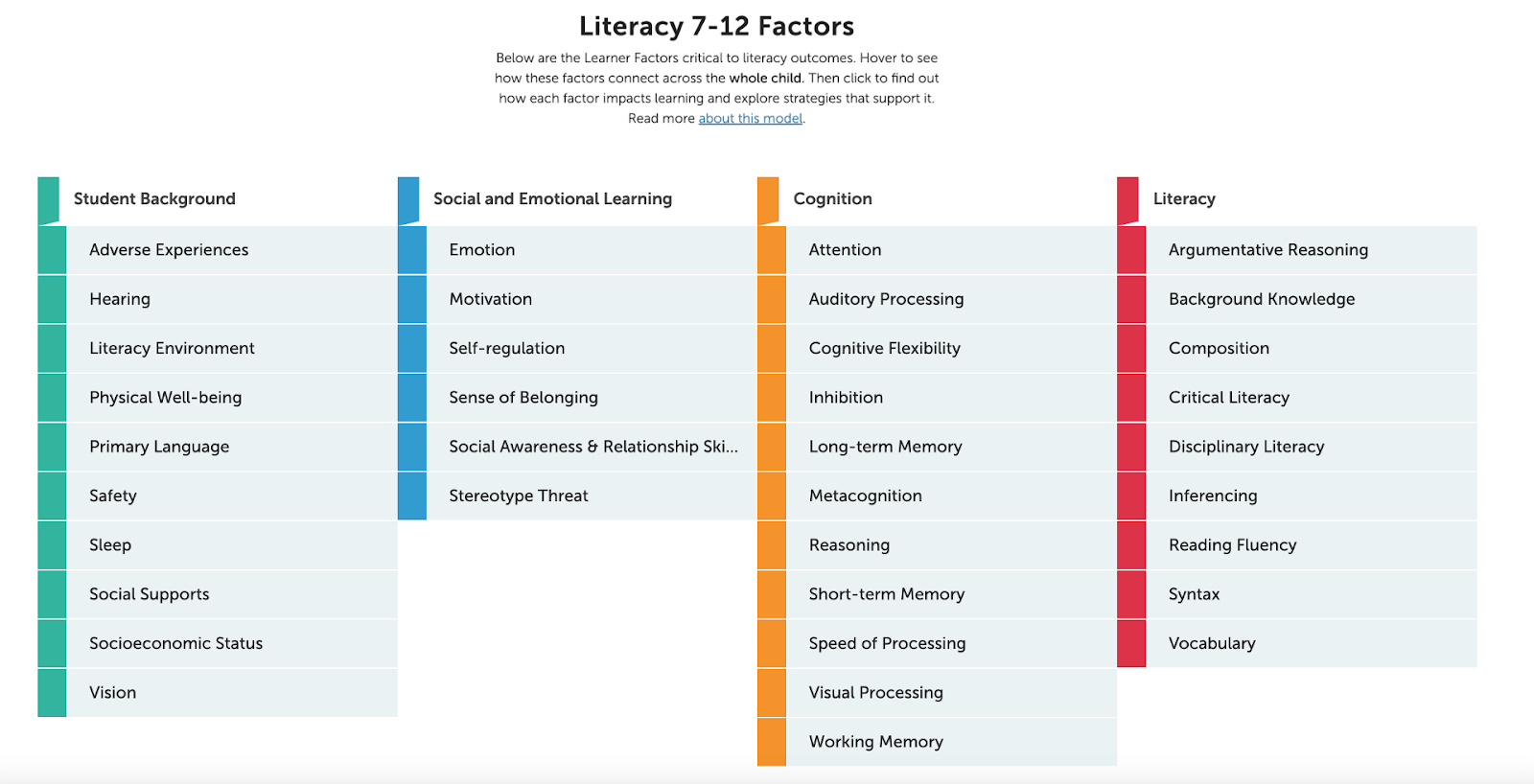
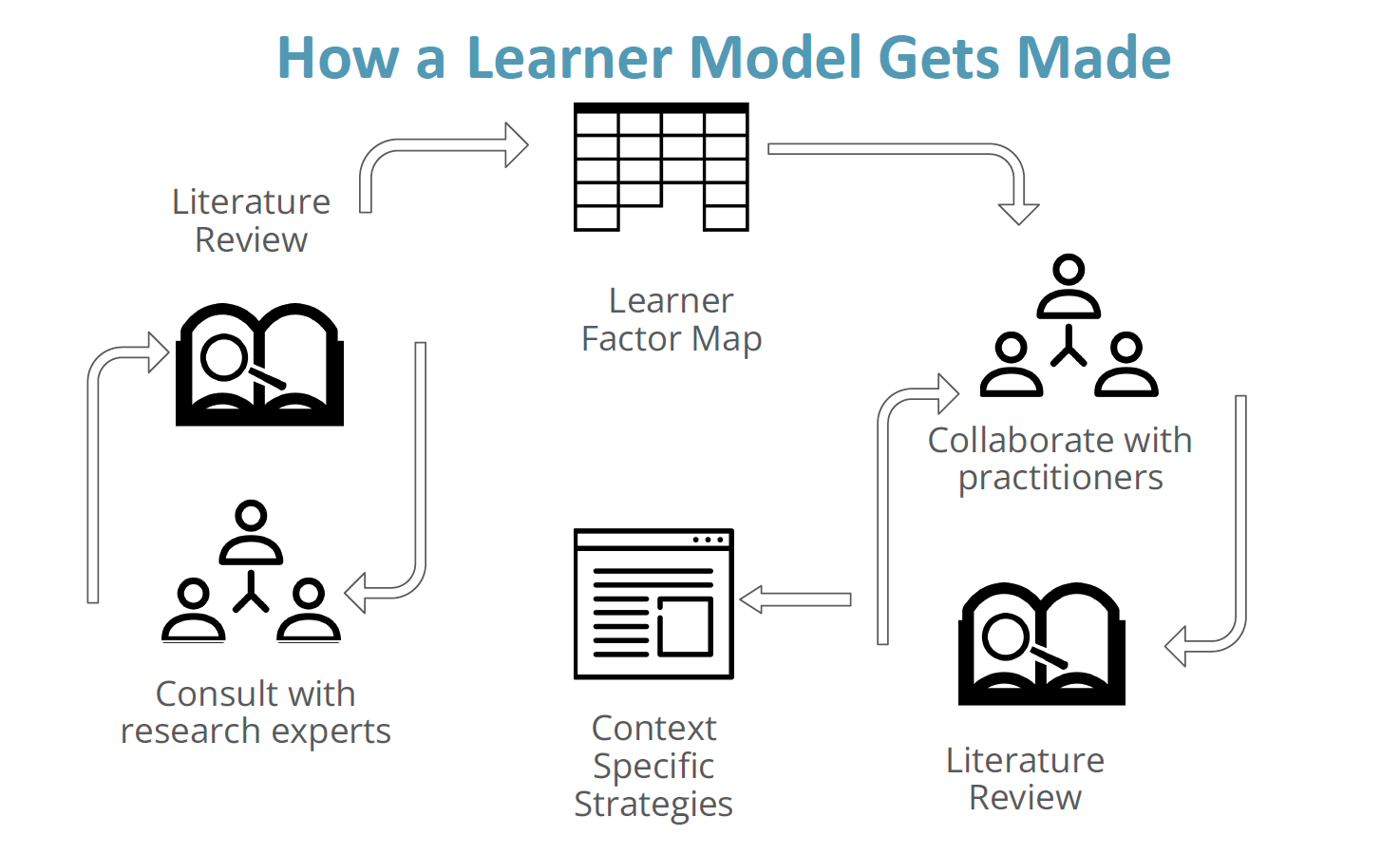

 Except where otherwise noted, content on this site is licensed under a Creative Commons Attribution-NonCommercial 4.0 International License
Except where otherwise noted, content on this site is licensed under a Creative Commons Attribution-NonCommercial 4.0 International License
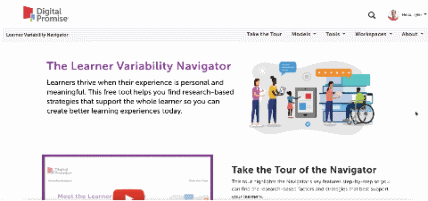
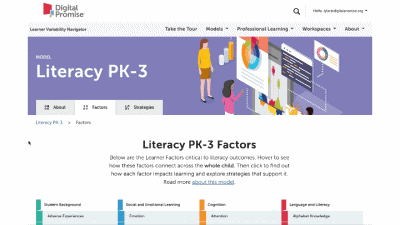
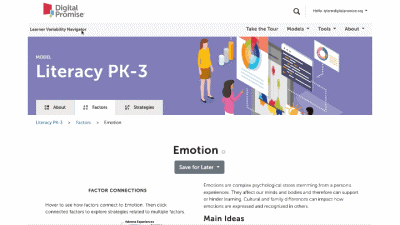
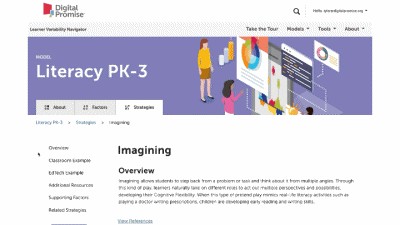
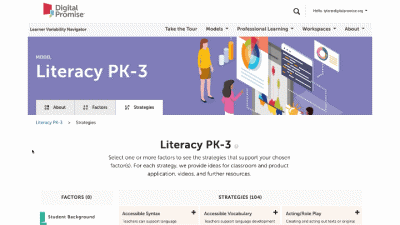
This is our homepage. You can access many of the features of the Navigator here, and learn more about how learner variability intersects with topics in education and learning. To start, select a content area – we call them Learner Models – to visit a factor map.
Factor maps show research-based concepts, "factors," that likely impact learning. They are organized into four categories: Learner Background, Social and Emotional Learning, Cognition, and Content Area. The map is interactive. Move your cursor over a factor to see connected factors. Select any factor to visit its summary page. We'll look at factor summary pages next.
This is a factor summary page. It provides a brief definition and review of the factor, a factor connections diagram, additional resources, and strategies that support this factor. On the strategy card, the multi-colored boxes show all the factors that it supports. Select a strategy to visit its summary page.
Strategy summary pages have an overview, information about using the strategy in different learning environments, resources of interest, the factors this strategy supports, and related strategies you can explore. To view all the strategies in a content area, use the strategies tab at the top of the page. We'll look at all the Strategies for this learner model next.
The strategy page shows ALL of the strategies for that learner model. You can select factors of interest for you or your learners, and it will narrow the strategies to only those that match all of the factors selected. This makes it easy to find key strategies to better design for learner variability. Again, select the strategy name to visit its summary page.
Are you sure you want to delete this Workspace?
Enter the email address of the person you want to share with. This person will be granted access to this workspace and will be able to view and edit it.
Adjust the permissions of your Workspace.
This Workspace is .
This Workspace's Reflection Area is .
Learner variability is the recognition that each learner is a unique constellation of strengths and challenges that are interconnected across the whole child. Understanding these connections and how they vary according to context is essential for meeting the needs of each learner.
It disrupts the notion of a one-size-fits all education. Understanding learner variability helps educators embrace both students’ struggles and strengths as we connect practice to uplifting the whole learner.
Throughout the site, we talk about "factors" and "strategies." Factors are concepts research suggests have an impact on how people learn. Strategies are the approaches to teaching and learning that can be used to support people in how they learn best.
Use the Learner Centered Design Tool to build a workspace. Go to Learner Centered Design Tool.
Or, create a new blank workspace for your product or project.
Use one of the guided tools to build a workspace.
Or, create a new blank workspace for your product or project.
Make a copy of this workspace.
Redirecting soon...
Generating summary page
Loading...
On this page, using your heatmap, you will be asked to select factors to further explore, and then select new strategies you might incorporate into upcoming instruction. Once done, click “Show Summary" to view your Design Summary Report.
On this page, using your heatmap, you will be asked to select factors to further explore, and then select new strategies you might incorporate into upcoming instruction. Once done, click “Show Report” to view your Design Summary Report.
By selecting "Show Report" you will be taken to the Assessment Summary Page. Once created, you will not be able to edit your report. If you select cancel below, you can continue to edit your factor and strategy selections.
Announcement here
Item successfully added to workspace!
Issue adding item to workspace. Please refresh the page and try again.
Learner variability is the recognition that each learner is a unique constellation of strengths and challenges that are interconnected across the whole child. Understanding these connections and how they vary according to context is essential for meeting the needs of each learner. It embraces both students’ struggles and strengths. It considers the whole child.
Throughout the site, we talk about "factors" and "strategies." Factors are concepts research suggests have an impact on how people learn. Strategies are the approaches to teaching and learning that can be used to support people in how they learn best.
The Learner Variability Navigator is a free, online tool that translates the science of learner variability into factor maps and strategies that highlight connections across the whole learner. This puts the science of learning at teachers' fingertips, empowering them to understand their own practice and support each learner.